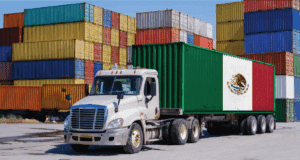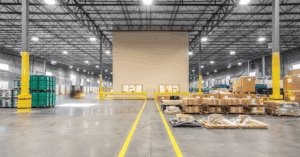Coronavirus
October has been one of the most difficult months for both the international and domestic supply chains as major US ports are becoming more congested by the day, and shortages loom. Most recent counts by Maritime Traffic, a ship tracking website, as well as others, have shown there to be as many as 50-70 vessels waiting to be unloaded.
“We are facing an unprecedented cargo surge at the ports of Long Beach and Los Angeles due to major global pandemic production shifts and decades old supply chain challenges” says the mayor of Long Beach, California, Robert Garcia.
The serious backlog points to a shortage of port and warehouse workers, as well as drivers to move docked freight. The Biden administration is seeking to address this serious backlog by negotiating with these ports for 24/7 operations. This will effectively double the number of hours cargo is moving off ships and onto their destination. Union members from the International Longshore and Warehouse Union and others are expected to make up the difference in labor. Many national retailers (Walmart, Home Depot, etc.) are also increasing operations to clear out cargo and free up space on the docks.
While there are many factors contributing to the delays, the coronavirus has exacerbated an already growing problem. Labor shortages have increased due to protection mandates and widespread unemployment incentives. These combined with an already tight driver capacity, have severely limited port staff and has added to the overall crisis.
GDP
The official United States GDP numbers have not been released for Q3, but projection entities such as the Conference Board Economic Forecast suggest that the US Real GDP rate will fall to 3.5% (annualized rate) for Q3. The Conference Board also suggests that the decrease in GDP is due because “Bottlenecks in global supply chains made it difficult for businesses to keep up with elevated demand for many goods earlier this year, resulting in a sharp contraction in private inventories. [They] expect this trend to reverse over the coming months as the December holiday period approaches, and forecast a rebound in private inventories. However, the pace of restocking will be slower than previously anticipated as the Delta variant has hindered manufacturing and shipping activity in key economies around the world.”
Currently, the global economy is expected to grow 5.9%.
Employment
According to the Bureau of Labor Statistics, the unemployment rate fell by 0.4 percent to 4.8%. The report shows that “Employment in transportation and warehousing increased by 47,000 in September, in line with gains in the prior 2 months. In September, job gains continued in warehousing and storage (+16,000), couriers and messengers (+13,000), and air transportation (+10,000). Employment in transportation and warehousing is 72,000 above its pre-pandemic level in February 2020.”
Inflation
US inflation rose from last month to 5.4%. According to a recent Gartner survey of over 111 CFOs, more than 50% of surveyed organizations are experiencing severe inflations in raw materials, commodities, and freight during Q2. Three in five also state they are experiencing nearly double wage inflation. “Most CFOs today have not experienced this level of sustained and broad-based input price inflation,” Randeep Rathindran, vice president of research of Gartner Finance, said.
Currently, global inflation is also on the rise. According to Statista, the global inflation rate is 3.5% – the highest since 2018.
Manufacturing
Data from the US Federal Reserve’s October release shows that industrial production fell overall 1.3%. Manufacturing on the whole decreased .7% while automotive manufacturing specifically fell 7.2%. The drop in automotive production is cited due to the shortage of semiconductors.
Interest Rates
The US Federal Reserve will be meeting November 3rd, and many suggest that they will outline their plans to “taper” mortgage support. Mortgage rates saw a steep incline in October that are projected to continue throughout November. The Fed is not the only driving force for the higher rates, however. Freddie Mac’s chief economist, Sam Khater, stated October 21st that “Mortgage rates continued to rise this week due to the trajectory of both the economy and the pandemic.”
Capacity
According to DAT Trendlines, capacity is still limited with an average 6.2:1 Load-to-Truck Ratio. This imbalance is leading to higher rates with no immediate decline in sight.
The US is not the only country facing limited capacity. Many Asian nations, including China and Thailand, are reporting carrier shortages as well. These shortages contribute to significantly increased shipping costs for US imports.
Regulations
In early October, a bipartisan group in the US House of Representatives presented the Supply CHAIN Act to create the Office of Supply Chain Resiliency. The stated goal for this office is to monitor supply chains of critical goods and respond to disruptions as well as bring together commissions of private and public supply chain experts to recommend US supply chain improvements.
Further goals include centralizing response to supply chain crises as well as develop incentives for US-based manufacturing.
The office is still in the hypothetical stage as the Supply CHAIN Act has yet to appear before the entire House, Senate, or president for official instatement.
Rates
Rates are continuing to climb. Industry experts, like Deloitte, project consumer purchasing activity to increase anywhere from 9-13% this holiday season. This demand combined with delays at entry ports and driver shortages, drive prices up significantly for even routine shipments. Truck spot rates have risen 2.7% according to DAT trendlines, and companies have been reporting even higher rates for shipping containers.
Burlington Stores Chief Financial Officer John Crimmins said in August, “There aren’t enough containers. There aren’t enough ships. There aren’t enough trucks or trains. There is more volume now than any part of the supply chain pipe can adequately handle,” and that trying to expedite orders “even further increased the pressure on the supply chain, helping to drive even higher rates.” There have been reports of 40 foot containers, normally priced at $2500 to ship, costing as much as $18,000 to load and ship from Asia to the US. These increases represent as much as half the cargo cost in many instances.
Behaviors
Consumer buying has increased over the course of the pandemic and experts are saying that most purchases are for goods rather than services. This demand has led to large sales growth, but has also put retailers in a poor position to meet the increased demand. The combination of slower production as well as difficulties from the ports have led to decreased availability for products and the inevitability of bare shelves this holiday season.
Technology
One of the greatest technology issues companies faced during the pandemic is their data silos. Visibility has been a challenge long before the pandemic, but the current issues from global lockdowns have highlighted the severity of those visibility challenges and the need to upgrade data systems. Upstream suppliers are one particular area in need of better visibility as many US-based customers were left without alternatives when their imports were not available.
Fuel Impact
Fuel prices have increased from September to October 1%. Prices have seen an overall growth of 40.2% from September 2020 to September 2021.
Driver Concerns
The vaccine mandate is one of drivers’ top concerns at the moment. The American Trucking Association has issued a letter expressing this concern to the Biden Administration in late October. ATA President, Chris Spear said in the letter, “While much of the country was sequestered in their homes, the trucking industry served its essential function and did so successfully with safety standards developed by public health experts … Now placing vaccination mandates on employers, which in turn force employees to be vaccinated, will create a workforce crisis for our industry and the communities, families and businesses we serve.” The ATA warns that the mandate would likely cause up to 37% of drivers to quit. These drivers are vital as they supply 80% of the country and move 70% of all freight tonnage.



